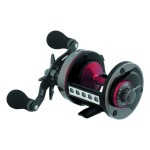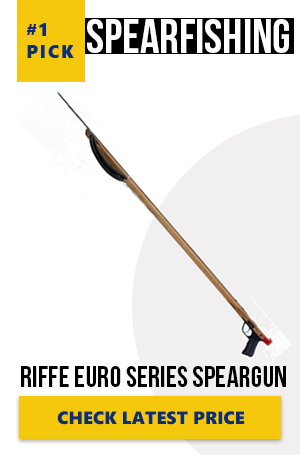What Is A Permit Fish And 15 Facts You Should Know
Permit fish are a popular gamefish that can be found in the tropical waters of the Atlantic and Pacific oceans. These elusive creatures are highly prized by anglers for their incredible speed, strength, and fighting ability.
But what exactly is a permit fish? In this article, we will delve into everything you need to know about these fascinating creatures.
From their physical characteristics to their feeding habits, we’ll explore 15 facts about permit fish that every fishing enthusiast should be aware of.
So grab your gear and get ready to learn more about one of the most exciting species in the ocean!
Physical Characteristics Of Permit Fish
The permit fish, also known as Trachinotus falcatus, is a highly sought-after game fish among anglers. This species of fish has an elongated body with a distinctive forked tail and deeply forked dorsal fin spines that give them the appearance of being silver-plated. The permit’s scales are large and diamond-shaped, providing excellent camouflage in its natural habitat.
Behavioral patterns suggest that these fish prefer shallow waters near coral reefs or grass beds where they can find their preferred prey – crustaceans such as crabs, shrimp, and small lobsters.
Permit fish are notoriously difficult to catch due to their wariness and skittish nature. They have been observed swimming away from potential threats at high speeds when feeling threatened by predators or fishing lines. Despite this behavior pattern, some experienced anglers have noted that permits may become aggressive during feeding frenzies, making it easier for fishermen to hook them on bait designed specifically for this species.
Habitat And Distribution
Permit fish can be found in the warm waters of the Atlantic Ocean, from North Carolina to Brazil. They prefer shallow water environments such as sand flats, coral reefs, and seagrass beds where they feed on crustaceans, small fish, and mollusks. These habitats are important for permit fish not only because it provides them with food but also serves as a nursery ground for their young.
However, threats to these habitats increase every year due to coastal development, pollution, overfishing and climate change. Coastal development leads to habitat loss through dredging or filling in wetlands that serve as breeding grounds for many species including permit fish. Pollution affects water quality which impacts seagrass beds and coral reefs resulting in degradation of habitat quality which ultimately diminishes the population of permit fish.
Overfishing poses a significant threat since permit fish populations cannot reproduce quickly enough to replenish themselves after being heavily fished. Lastly, climate change is causing sea levels to rise leading to shoreline erosion while increasing ocean temperatures making it difficult for some species like seagrasses which require cooler temperatures to survive.
In order to protect habitats crucial for the survival of permit fish we need to reduce human activities that threaten them such as coastal development and pollution control measures should be put in place. Additionally, quotas must be established for fishing permits so that their populations have a chance at recovery while educating people about sustainable fishing practices will go a long way towards ensuring this species has a future.
It’s our responsibility as stewards of the oceans’ resources to take action now before it’s too late!
Feeding Habits Of Permit Fish
Understanding the feeding patterns of permit fish is essential for their conservation and management. These fish are opportunistic feeders, meaning they will consume a wide variety of prey items available in their habitat. Common food sources include crustaceans, mollusks, small fishes, and algae. They usually hunt during high tide when water levels are at their highest and prey is abundant.
Permit fish play an important ecological role as predators that help regulate populations of smaller organisms in marine ecosystems. Their diet also includes many commercially valuable species such as crabs and shrimp, making them significant to both recreational fisheries and commercial fishing industries. It’s crucial to maintain healthy permit populations because this can have far-reaching effects on the entire ecosystem they inhabit.
The sharp teeth of permit fish allow them to crush hard-shelled prey like clams or snails.
Juvenile permits tend to feed in seagrass beds where they find shelter from predators.
Adult permits use their unique ability to detect vibrations in the water column caused by breaking waves to locate potential prey items.
Life Cycle And Reproduction
Having discussed the feeding habits of permit fish, it is now time to delve into their life cycle and reproduction.
As migratory species, permit fish travel long distances in search of food and breeding grounds. Their migration patterns are often influenced by changes in water temperature and availability of prey.
During mating season, male permit fish will actively pursue females in a display of courtship behavior that includes head-to-tail swimming and rubbing against each other.
Once paired up, they will swim together closely for several hours before eggs are released by the female and fertilized externally by the male.
These fertilized eggs then float freely in the ocean until hatching occurs after about 3-4 days.
The newly hatched larvae feed on planktonic organisms while gradually developing into juvenile permit fish over a period of several months.
Through these fascinating behaviors, we can see how permit fish continue to adapt to their environment and ensure their survival as a species.
Sporting Value And Angling Techniques
Sporting Value and Angling Techniques:
Permit fish are highly sought after by sport fishermen due to their elusive nature, speed, strength, and the challenge they pose. As a result, permit fishing has become increasingly popular in recent years, attracting anglers from around the world who wish to test their skills against this formidable gamefish.
To increase your chances of catching a permit fish, it is essential to use the right bait selection and angling techniques. Live crabs or shrimp are often used as bait because they resemble the natural prey of permit fish. However, artificial lures such as crab flies can also be effective if presented correctly.
When casting for permits, accuracy and distance are crucial since these fish tend to hang out in schools that move quickly through shallow water flats. Once hooked, permit fish will put up a fierce fight with powerful runs and acrobatic jumps that require skillful maneuvering on the part of the angler.
By mastering the art of permit fishing with proper bait selection and angling techniques, you can take part in one of the most exciting challenges available in sportfishing today. Whether you’re an experienced angler looking for a new adventure or someone just starting out in the sportfishing world, catching a permit is an accomplishment that should not be missed!
Conservation Efforts And Threats To Permit Fish
As beautiful as the permit fish is, it struggles to survive in today’s world. Conservation challenges and economic impacts have threatened this species’ existence.
Overfishing, habitat destruction, and climate change are among the biggest threats facing this magnificent creature. Despite conservation efforts by many organizations, permit populations continue to decline at an alarming rate.
A lack of funding for research and enforcement has made it difficult to protect them from these dangers. If we don’t act now, future generations may never get a chance to experience the beauty of this remarkable fish.
The permit is highly sought after by recreational anglers due to its fighting ability. Overfishing poses one of the biggest threats to permits. Protecting their habitats through responsible fishing practices can help ensure that they will be around for years to come.
Interesting Permit Fish Trivia
Permit fish are more than just a popular gamefish, they also hold cultural significance in many regions.
In the Caribbean, permit fish cuisine is highly esteemed and considered a delicacy.
The flesh of this species has a firm texture and mild flavor, making it perfect for grilling or frying.
Not only does it taste great, but permit fish is also low in fat and high in protein.
In addition to its culinary value, permit fish also plays an important role in various cultures around the world.
For example, in some Pacific Island communities, permit fish are associated with good luck and prosperity.
It’s not uncommon to see images of these fish on clothing or jewelry as symbols of good fortune.
Overall, the permit fish is not just another species of gamefish but rather a culturally significant creature that deserves our respect and admiration.
Tips For Catching Permit Fish
If you are intrigued by the fascinating permit fish and want to catch one for yourself, here are some tips that can help.
Before heading out on your fishing trip, make sure you have the right equipment. A sturdy rod with a fast action is necessary, along with a reel that has enough line capacity to handle strong runs from these powerful fish.
When it comes to bait and lures for catching permit fish, live crabs are often used as they are a natural part of their diet. Other popular choices include shrimp or small fish like sardines. As far as lures go, jigs in various colors can be effective, especially when tipped with shrimp or crab meat. Some anglers also swear by using flies tied specifically for permit fishing.
If you’re not sure where to start looking for permit fish, popular destinations include Florida’s Gulf Coast and the Florida Keys, Mexico’s Yucatan Peninsula, Belize, and the Bahamas. With patience and perseverance, you too can join the ranks of those who have caught this elusive gamefish.
Conclusion
In conclusion, if you’re looking for a challenging and exciting catch, the permit fish should definitely be on your list. With their unique physical characteristics and feeding habits, they are truly fascinating creatures to observe in their natural habitat.
As fisheries experts or marine biologists, we highly recommend practicing responsible angling techniques when pursuing these beautiful fish. While they may provide an exhilarating fight, it’s important to remember that overfishing can greatly harm their populations.
So grab your gear, head out to the flats or reefs where they reside, and enjoy the thrill of catching a permit fish while also respecting their role in our delicate aquatic ecosystem.
And as a fun little nod to history and culture, don’t forget to bring along some ‘pirate’s gold’ (rum) to celebrate your successful catch like the old seafarers used to do!





























